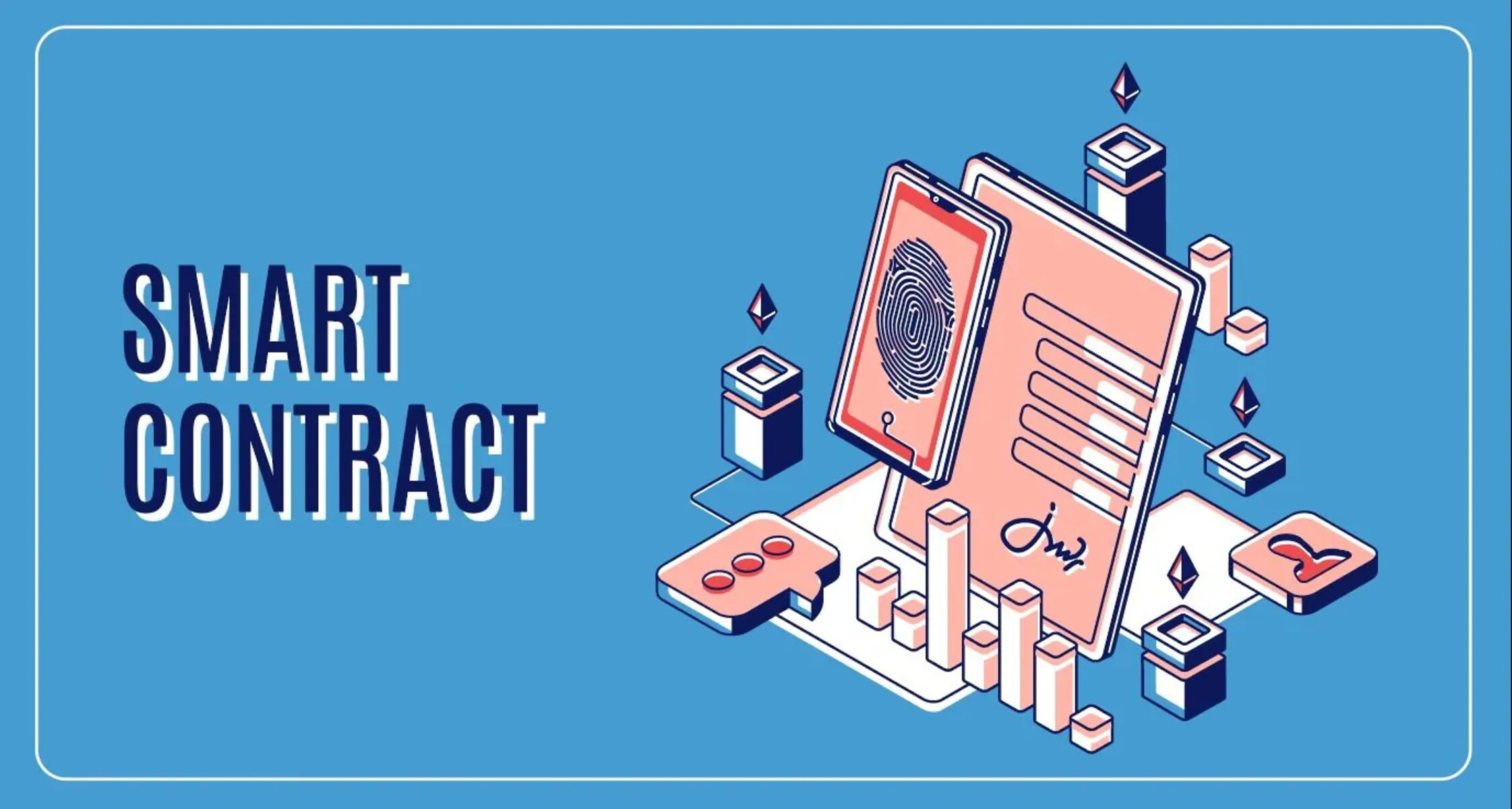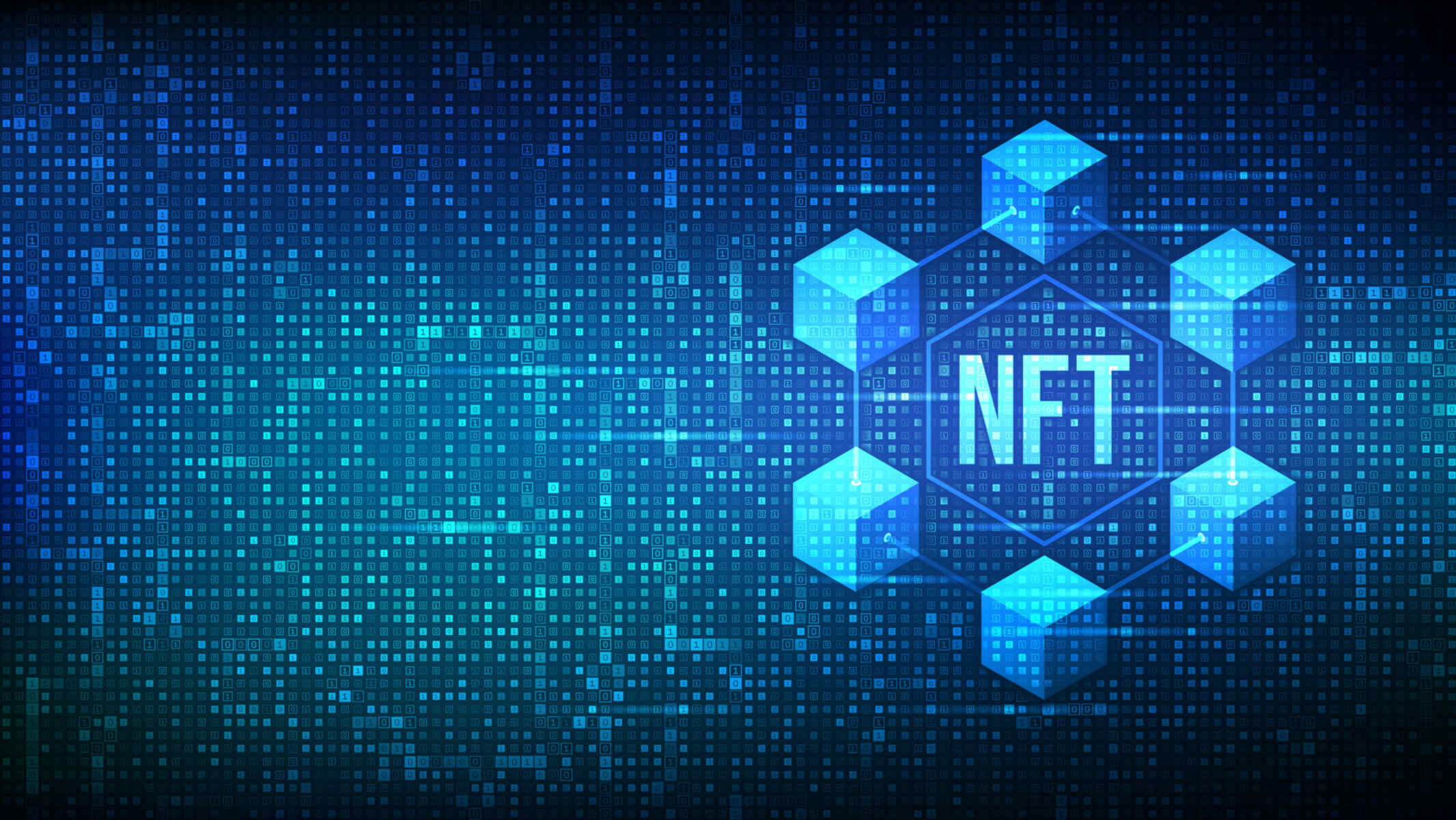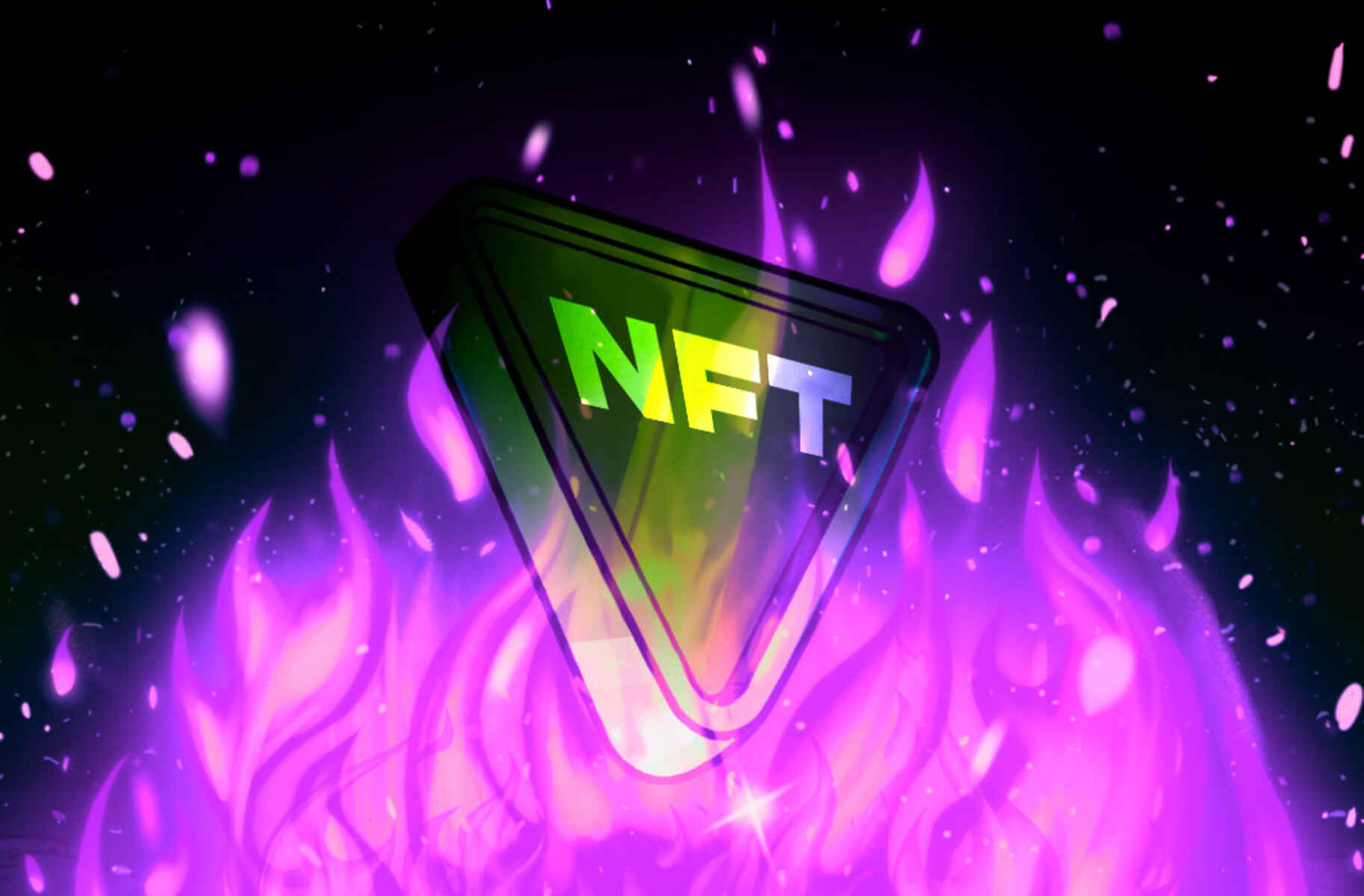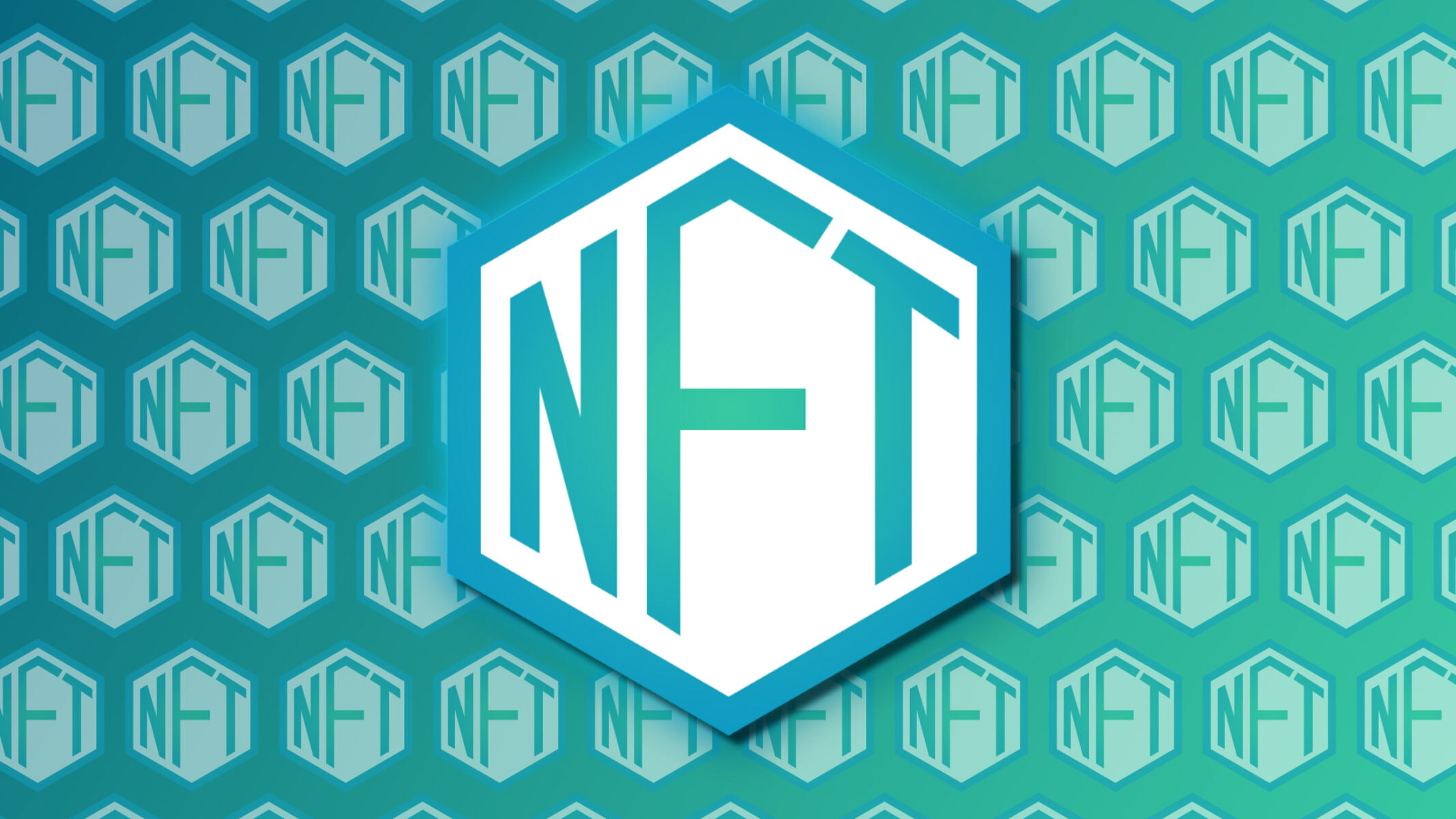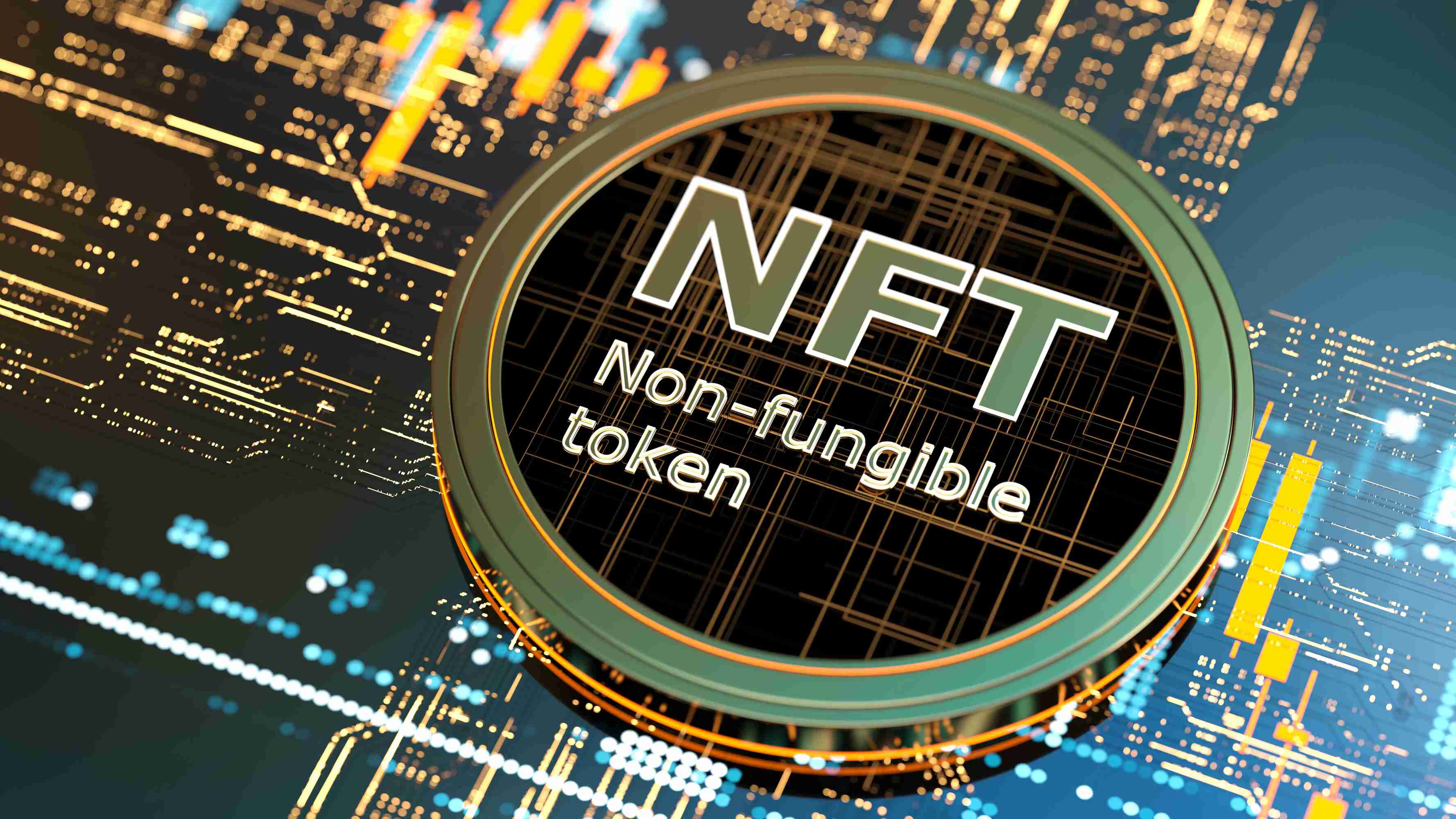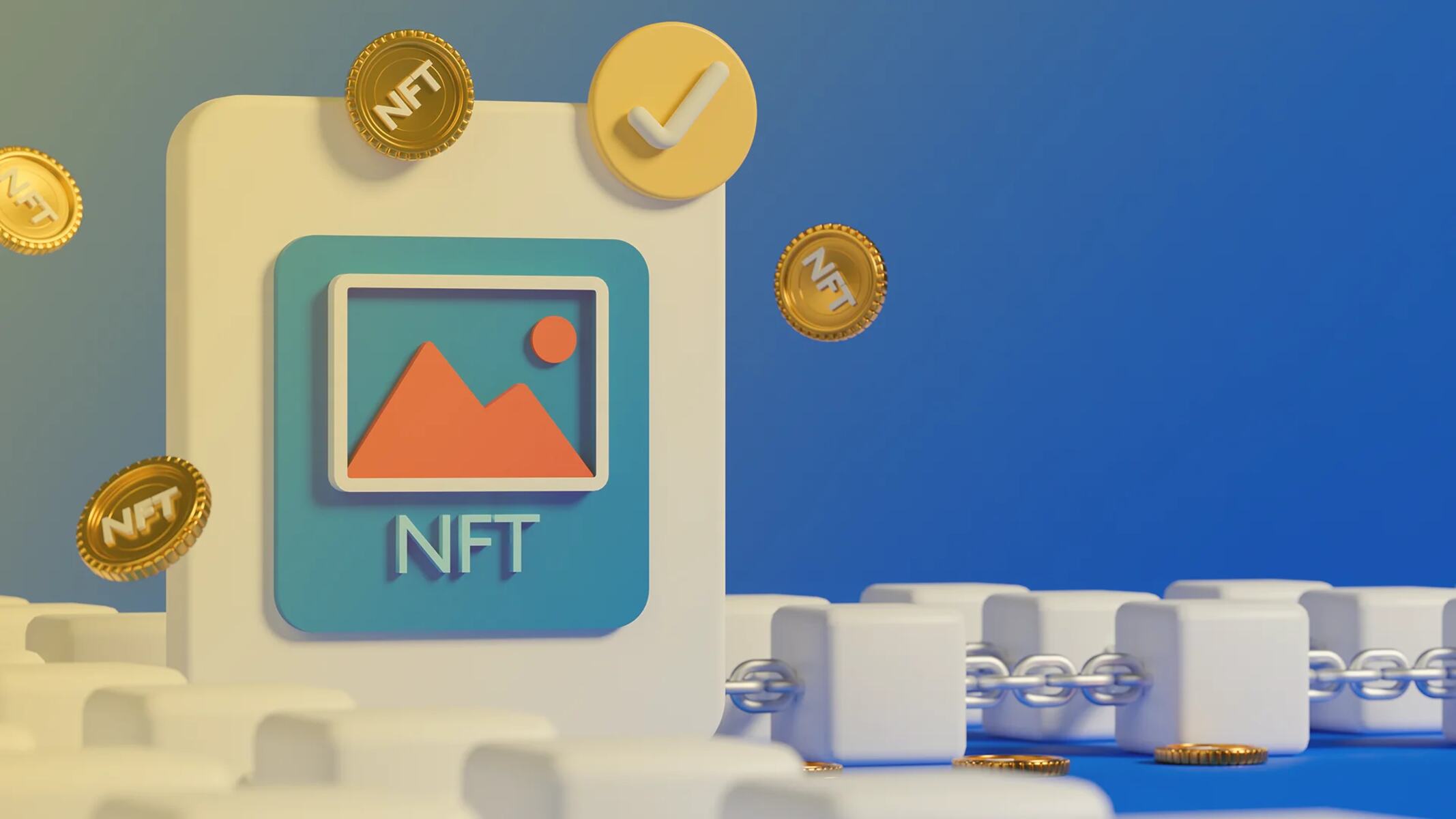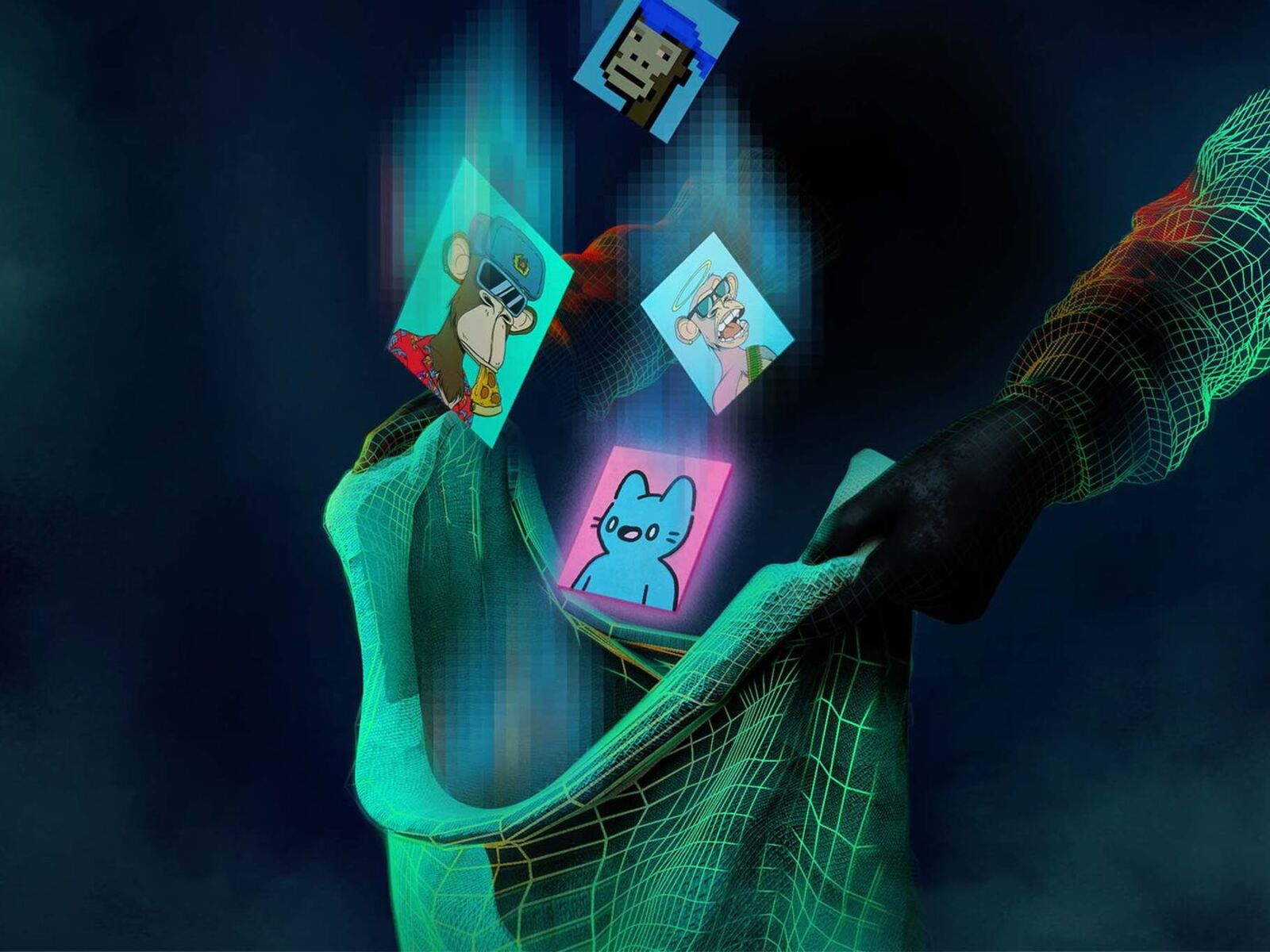Introduction
Welcome to the world of NFTs and smart contracts! In recent years, the rise of non-fungible tokens (NFTs) has taken the digital world by storm. Whether it’s a digital artwork, collectible item, or virtual real estate, NFTs have revolutionized the way we buy, sell, and trade digital assets. At the heart of this revolution are smart contracts, which power the functionality and uniqueness of NFTs.
But what exactly is a smart contract, and how does it relate to NFTs? In this article, we will delve into the world of NFT smart contracts and explore their role in the booming NFT industry. We will also discuss how NFT smart contracts work, their benefits and limitations, as well as some practical use cases.
Before we dive into the intricacies of NFT smart contracts, let’s first gain a clear understanding of what NFTs are. NFTs are digital assets that represent ownership or proof of authenticity of a unique item or piece of content. Unlike cryptocurrencies, such as Bitcoin or Ethereum, which are fungible and can be exchanged on a one-to-one basis, NFTs are indivisible and cannot be exchanged like-for-like. Each NFT is distinct and holds its own value.
Now that we have a grasp of NFTs, let’s explore the concept of smart contracts. At its core, a smart contract is a self-executing agreement that is coded with specific conditions and rules. These contracts are stored on the blockchain, making them transparent, secure, and tamper-proof. The beauty of smart contracts lies in their ability to automate the execution of transactions and eliminate intermediaries, thus enhancing efficiency and reducing costs.
In the context of NFTs, smart contracts play a crucial role in defining the characteristics and functionalities of each unique token. These contracts contain the necessary code to enforce the ownership rights, transferability, and provenance of NFTs. This ensures that the digital assets represented by NFTs maintain their uniqueness and value as they are bought, sold, and traded within various online marketplaces.
In the following sections, we will explore how NFT smart contracts work and the benefits they bring to the NFT ecosystem. We will also discuss some of the limitations of NFT smart contracts and delve into practical use cases that highlight their real-world applications. So, buckle up and get ready to unravel the exciting world of NFT smart contracts!
Understanding NFTs
Before diving deep into the world of NFT smart contracts, it’s important to have a solid understanding of what NFTs are and how they differ from other digital assets. NFT, which stands for non-fungible token, is a type of digital asset that represents ownership or proof of authenticity of a unique item or piece of content. Unlike cryptocurrencies such as Bitcoin or Ethereum, which are fungible and can be exchanged on a one-to-one basis, NFTs are indivisible and cannot be exchanged like-for-like.
Each NFT holds unique information that sets it apart from other tokens. This uniqueness is what gives NFTs their value. NFTs can represent various types of digital assets, including artworks, music, videos, virtual real estate, collectibles, and more. Essentially, any digital file can be tokenized and turned into an NFT.
One of the key features of NFTs is their immutability. NFTs are typically built on blockchain technology, which provides a decentralized and transparent ledger. This means that once an NFT is created and its ownership is recorded on the blockchain, it is nearly impossible to alter or counterfeit. This permanence and security make NFTs a trusted medium for buying, selling, and trading digital assets.
Another important aspect of NFTs is their provable ownership. NFT smart contracts store ownership information and transaction history on the blockchain, giving buyers and sellers a verifiable record of ownership. This provenance not only enhances the trustworthiness of NFTs but also allows creators to earn royalties every time the NFT is sold in the secondary market.
NFTs have gained significant popularity and traction in recent years. They have opened up new possibilities for creators and artists to monetize their digital works and connect with their fans directly. With NFTs, creators can tokenize their art, set limited editions, and earn a percentage of every subsequent sale, ensuring ongoing revenue streams.
Moreover, NFTs have created a vibrant and dynamic marketplace where collectors and enthusiasts can discover, buy, and trade unique digital assets. Online platforms dedicated to NFTs have emerged, providing a space for creators to showcase their work and for collectors to find and acquire NFTs that align with their interests.
While NFTs have been praised for their potential to revolutionize the art and creative industries, they have also faced criticism regarding environmental concerns due to their energy-intensive nature. However, efforts are being made to address these concerns and find more sustainable solutions.
In the next section, we will delve into the concept of smart contracts and explore their role in the world of NFTs. Understanding smart contracts is crucial to grasp how NFTs are powered and how they function within the blockchain ecosystem. So, let’s continue our journey into the world of NFT smart contracts!
What are Smart Contracts?
To understand NFT smart contracts, it’s essential to have a clear understanding of smart contracts themselves. At its core, a smart contract is a self-executing computer program that is automatically executed when certain predefined conditions are met. These contracts are built on blockchain technology, making them transparent, secure, and tamper-proof.
The concept of smart contracts was first introduced by computer scientist Nick Szabo in the 1990s, long before blockchain technology became prevalent. Szabo envisioned these contracts as a way to automate transactions and remove the need for intermediaries or third parties. However, it was not until the emergence of blockchain technology, specifically Ethereum, that smart contracts became widely implemented and utilized.
Smart contracts are written in programming languages such as Solidity or Vyper, which are specifically designed for developing contracts on blockchain platforms. They define the terms and conditions of an agreement and automatically enforce those terms without the need for human intervention.
One of the key characteristics of smart contracts is their immutability. Once a smart contract is deployed on the blockchain, it cannot be altered or tampered with. This ensures that the rules and conditions of the agreement remain intact and cannot be manipulated by any party involved.
Another important aspect of smart contracts is their trustworthiness and transparency. Since smart contracts are executed on a decentralized blockchain network, the execution is visible to all participants. This transparency eliminates the need to trust or rely on a single party, as the execution process can be independently verified.
Smart contracts have a wide range of applications beyond NFTs. They can be used for various purposes, such as financial transactions, supply chain management, real estate transactions, and more. The automation and efficiency that smart contracts bring to these sectors have the potential to revolutionize traditional industries.
In the context of NFTs, smart contracts play a crucial role in defining the characteristics and functionalities of each unique token. NFT smart contracts hold the information about the ownership rights, transferability, and provenance of the digital asset represented by the NFT. They ensure that each NFT maintains its unique properties and value as it is bought, sold, and traded within various online marketplaces.
Now that we have a solid understanding of smart contracts, it’s time to explore their specific role in the realm of NFTs. In the next section, we will delve into how NFT smart contracts work and the benefits they bring to the NFT ecosystem. So, let’s continue our journey into the fascinating world of NFT smart contracts!
The Role of Smart Contracts in NFTs
Smart contracts play a vital role in the world of non-fungible tokens (NFTs). They are the backbone of NFT functionality, ensuring the uniqueness, ownership, and transferability of digital assets. Without smart contracts, NFTs would lose their distinctiveness and become mere tokens without any inherent value or purpose.
The primary role of smart contracts in NFTs is to define and enforce the rules and conditions of each token. When an NFT is created, a unique smart contract is associated with it. This contract contains the necessary code that determines the ownership rights, transferability, and other characteristics of the digital asset represented by the NFT.
One of the key features of NFT smart contracts is the ability to verify ownership. Smart contracts store ownership information on the blockchain, enabling individuals to prove that they own a particular NFT. This provenance is crucial in establishing the authenticity and value of NFTs, as it allows buyers and sellers to trace the origin and ownership history of each token.
In addition to ownership verification, smart contracts facilitate the transferability of NFTs. By embedding transfer functionality within the contract code, NFT owners can easily and securely transfer their tokens to other individuals. The smart contract ensures that the transfer adheres to the predefined rules and conditions, maintaining the integrity of the NFT ecosystem.
Furthermore, smart contracts enable the addition of royalties and rights to NFTs. Creators can program their smart contracts to include royalty fees that are automatically paid to them whenever their NFT is resold on the secondary market. This creates new revenue streams for artists and content creators, allowing them to benefit from the growing value of their digital assets.
Smart contracts also enhance the security and trustworthiness of NFT transactions. By leveraging blockchain technology, smart contracts eliminate the need for intermediaries or third parties. This reduces the risk of fraud, as the rules and conditions of the contract are executed automatically and cannot be manipulated or altered. The transparency and immutability of smart contracts provide a level of assurance and reliability that traditional agreements often lack.
Moreover, smart contracts facilitate the creation of limited edition NFTs. Artists and creators can specify the maximum number of copies for an artwork or collectible, ensuring its scarcity and exclusivity. The smart contract enforces these limitations, preventing the creation of additional copies beyond the predefined quantity.
In summary, smart contracts play a crucial role in the world of NFTs. They provide the framework and rule set for each unique token, ensuring their distinctiveness, ownership, and transferability. Smart contracts enable ownership verification, facilitate secure transfers, and allow for the addition of royalties and rights. They also enhance the security and transparency of NFT transactions. Without smart contracts, NFTs would lose their value and transformative potential. The next section will delve into the inner workings of NFT smart contracts and shed light on how they operate. So, let’s dive deeper into the world of NFT smart contracts!
How Do NFT Smart Contracts Work?
NFT smart contracts are the driving force behind the functionality and uniqueness of non-fungible tokens (NFTs). They are coded programs that define the rules, characteristics, ownership, and transferability of each NFT. Understanding how NFT smart contracts work is essential to grasp the inner workings of the NFT ecosystem.
At a high level, NFT smart contracts are deployed on blockchain networks, most commonly on platforms like Ethereum. These contracts are typically written in programming languages such as Solidity or Vyper. They specify the behavior and functionalities of the NFT, including how it is created, transferred, and owned.
When an NFT is created, a unique smart contract is associated with it. This contract stores essential information about the NFT, such as its ID, metadata, and ownership details. It also includes functions that enable actions like transferring the NFT, checking ownership, and enforcing royalty payments.
One of the key components of an NFT smart contract is the metadata. Metadata refers to the additional information attached to an NFT, such as its title, description, artwork, and any other relevant attributes. This metadata helps provide context and additional value to the NFT. The metadata is typically stored off-chain, and its location is recorded on the smart contract.
Ownership of an NFT is established through the smart contract. The contract contains a mapping that associates the unique identifier of the NFT with the address of the current owner. This mapping allows anyone to verify the ownership status of a given NFT by simply querying the smart contract on the blockchain.
NFT smart contracts also enable the transfer of ownership. Through the contract’s transfer function, the current owner can transfer the NFT to a new owner by specifying the recipient’s address. The smart contract validates the transfer, ensuring that the sender is the rightful owner and that the NFT is not already locked or being transferred to someone else.
Furthermore, NFT smart contracts can implement royalty mechanisms. Creators can set a percentage of royalties to be paid to them every time the NFT is sold on the secondary market. This is achieved by adding a royalty payment function to the smart contract, which automatically calculates and transfers the percentage of the sale amount to the creator’s wallet address.
The transparency and traceability of NFT smart contracts are made possible by the decentralized nature of blockchain technology. Each interaction with the smart contract, including NFT creation, ownership transfers, and royalty payments, is recorded on the blockchain’s public ledger. This ensures transparency and immutability, allowing participants to verify the history and legitimacy of each NFT.
It’s important to note that the functionality and behavior of NFT smart contracts may vary depending on the specific implementation and platform used. Different blockchain networks may have their own variations and standards for NFT smart contracts. Nevertheless, the fundamental principles of defining ownership, transferability, and additional functionalities remain consistent across most NFT smart contracts.
Now that we have explored how NFT smart contracts operate, it’s time to examine the benefits that these contracts bring to the world of NFTs. The following section will delve into the advantages and opportunities that arise from utilizing NFT smart contracts. So, let’s discover the benefits of NFT smart contracts!
Benefits of NFT Smart Contracts
NFT smart contracts offer numerous benefits that contribute to the growing popularity and adoption of non-fungible tokens (NFTs). These contracts bring unique functionalities and efficiencies to the NFT ecosystem, enhancing the experience for creators, collectors, and investors alike. Let’s explore some of the key benefits of NFT smart contracts:
1. Automatic Execution and Elimination of Intermediaries: NFT smart contracts are self-executing agreements that automatically carry out predefined actions when specific conditions are met. This automation eliminates the need for intermediaries or third parties, reducing costs, delays, and the risk of human error. Smart contracts empower individuals to engage in direct peer-to-peer transactions, fostering trust and efficiency within the NFT marketplace.
2. Increased Transparency and Auditability: NFT smart contracts are built on blockchain technology, which provides a transparent and immutable ledger. The execution of NFT transactions, including ownership transfers and royalties, is recorded on the blockchain, making it accessible to all participants. This transparency and auditability enhance trust and accountability, as the history and provenance of each NFT can be easily verified.
3. Ownership Verification and Provenance: NFT smart contracts enable verifiable and provable ownership of digital assets. By storing ownership information on the blockchain, anyone can validate the current owner of an NFT without relying on a centralized authority. This provenance is particularly crucial for artists and creators, as it helps protect their intellectual property rights and ensures that they are appropriately recognized and rewarded for their work.
4. Immutable Royalty Mechanisms: Smart contracts allow creators to include royalty mechanisms in the NFTs they create. These royalties are automatically executed and paid to the creator every time the NFT is resold in the secondary market. This feature ensures ongoing revenue streams for artists and content creators, even after the initial sale. NFT smart contracts empower creators to earn a fair share of the value generated from their digital assets, fostering a more sustainable ecosystem.
5. Scarcity and Limited Editions: Smart contracts enable the creation of limited edition NFTs. Artists and creators can specify a maximum number of copies for an artwork or collectible, ensuring its scarcity and exclusivity. The smart contract enforces these limitations, preventing the creation of additional copies beyond the predefined quantity. Limited edition NFTs add value and collectibility to digital assets, attracting both collectors and investors.
6. Global Accessibility: NFT smart contracts enable NFTs to be bought, sold, and traded globally. The decentralized nature of blockchain technology allows for seamless cross-border transactions without the need for intermediaries or complex processes. NFTs can be accessed and owned by individuals from different geographic locations, fostering a global community and expanding opportunities for artists and collectors.
7. Collaboration and Interoperability: Smart contracts adhere to established standards and protocols, allowing for interoperability between different platforms and marketplaces. This interoperability encourages collaboration and the creation of vibrant NFT ecosystems. Artists can showcase their work on various platforms, while collectors can browse and acquire NFTs from different sources. NFT smart contracts enable seamless integration and collaboration within the ever-growing NFT space.
These are just a few of the benefits that NFT smart contracts bring to the table. As the technology continues to evolve, we can expect to see even more innovative and exciting use cases for NFTs and their accompanying smart contracts. In the next section, we will explore some of the limitations and challenges that come with NFT smart contracts. So, let’s dive into the other side of the coin!
Limitations of NFT Smart Contracts
While NFT smart contracts offer numerous advantages, they also come with certain limitations and challenges. It’s important to be aware of these limitations to have a well-rounded understanding of the ecosystem surrounding non-fungible tokens (NFTs). Let’s explore some of the key limitations of NFT smart contracts:
1. Environmental Impact: One of the most pressing concerns associated with NFTs and smart contracts is their environmental impact. The majority of NFTs are currently built on blockchain networks like Ethereum, which consume significant amounts of energy to process transactions and execute smart contracts. The energy consumption and carbon footprint of NFTs have raised questions about their sustainability and long-term viability.
2. Scalability: Blockchain networks, including those supporting NFT smart contracts, face scalability challenges. As interest in NFTs continues to grow, increased transaction volume can lead to congestion, slow processing times, and high fees. Scalability solutions, such as layer 2 protocols and improved blockchain infrastructure, are being developed to address these challenges. However, scalability remains a limitation that needs to be overcome for broader adoption of NFTs.
3. Lack of Standardization: Although there are some emerging standards and protocols for NFT smart contracts, there is still a lack of widespread standardization across the NFT ecosystem. This can lead to fragmentation, interoperability issues, and difficulties in navigating and utilizing NFTs across different platforms. Efforts are being made to establish comprehensive standards that promote compatibility and interoperability among various NFT marketplaces and platforms.
4. Intellectual Property Concerns: NFTs and smart contracts have opened up new possibilities for digital artwork and creative expression. However, this brings about concerns regarding intellectual property rights and ownership verification. While smart contracts can help establish ownership, they do not guarantee the originality or authenticity of the underlying content. The potential for copyright infringement and plagiarism poses challenges for artists and creators in the NFT space.
5. User Education and Security: NFT smart contracts involve complex technical concepts and require users to understand how to interact with them securely. User education is crucial to ensure individuals are aware of the risks associated with NFTs, such as potential scams, phishing attacks, and the importance of securely storing private keys. Providing user-friendly interfaces, clear guidelines, and robust security measures is essential for widespread adoption of NFTs.
6. Volatility and Speculation: The NFT market has experienced significant price volatility and speculative behavior. Extreme price fluctuations and the speculative nature of NFT investments can lead to risk for buyers and sellers. While NFTs offer unique digital assets, the market’s unpredictability poses challenges for individuals looking to participate in the ecosystem.
7. Market Saturation and Dilution: As the popularity of NFTs grows, the market becomes increasingly crowded, resulting in a saturation of digital assets. With a vast number of NFTs available, it can be challenging for creators to stand out and for collectors to effectively navigate the choices. The abundance of NFTs can dilute the value and demand for individual assets.
It is important to acknowledge and address these limitations to build a sustainable and thriving NFT ecosystem. Efforts are underway to mitigate these challenges through technological advancements, environmental initiatives, and improved industry practices. As the sector evolves, these limitations can be opportunities for growth and improvement.
In the next section, we will explore practical use cases for NFT smart contracts and highlight some innovative applications of this technology. So, let’s dive into the world of NFT smart contract use cases!
Use Cases for NFT Smart Contracts
Non-fungible token (NFT) smart contracts have opened up a world of possibilities and innovative use cases beyond the realm of digital art and collectibles. These contracts have paved the way for creative applications and practical solutions that leverage the unique properties of NFTs. Let’s explore some compelling use cases where NFT smart contracts are making an impact:
1. Art and Collectibles: The art world has seen a significant surge in NFT adoption, allowing artists to tokenize and sell their digital artworks securely. NFT smart contracts enable artists to embed ownership rights, royalties, and provenance information directly into their creations. Collectors can then purchase and own digital artworks with authenticity and assurance, while artists continue to earn royalties from subsequent resales.
2. Gaming and Virtual Assets: NFTs have revolutionized the gaming industry, offering players true ownership of in-game assets. Smart contracts enable the creation and transfer of unique virtual items, characters, and land within virtual worlds. Players can collect, trade, and sell their NFT-based assets, creating an economy within the gaming ecosystem.
3. Music and Royalties: NFT smart contracts have the potential to reshape the music industry. Musicians can tokenize their music, granting fans ownership of limited edition albums or concert tickets. Smart contracts can also automate royalty payments, ensuring that artists receive a percentage of the revenue every time their music is streamed or sold.
4. Real Estate and Property: NFT smart contracts are disrupting the traditional real estate market by creating fractional ownership opportunities. Properties can be tokenized into NFTs, allowing investors to share ownership and enjoy benefits such as rental income and property appreciation. Smart contracts automate revenue distributions and make property investing more accessible.
5. Intellectual Property Protection: NFT smart contracts offer a new way to protect intellectual property rights. Creators can tokenize their works, including patents, trademarks, and copyrights, as NFTs. These tokens provide a verifiable record of ownership and proof of authenticity, making it easier to defend against infringement and establish ownership claims.
6. Supply Chain Transparency: NFT smart contracts can enhance supply chain management by ensuring transparency and traceability. Each step of the supply chain can be recorded on the blockchain, from production to distribution. This creates an immutable record, enabling consumers to verify the origin and authenticity of products and reducing the risk of counterfeiting.
7. Fan Engagement and Rewards: NFTs can be utilized to engage and reward fans in various industries. Sports teams can issue limited edition NFTs as digital collectibles, offering exclusive perks and experiences to fans. Content creators can mint NFTs that give owners access to special content, events, or merchandise, fostering a sense of community and loyalty.
These use cases represent just a fraction of the potential applications for NFT smart contracts. As the technology evolves, we can expect to see even more innovative ways to leverage the unique properties of NFTs and smart contracts across industries.
While the NFT market is still rapidly evolving, these use cases demonstrate the versatility and transformative potential of NFT smart contracts. By leveraging the capabilities of blockchain technology, NFTs and smart contracts are reshaping industries and unlocking new opportunities for creators, businesses, and consumers alike.
In the concluding section, we will summarize the main points discussed and highlight the significance of NFT smart contracts in the wider digital landscape.
Conclusion
NFT smart contracts have revolutionized the world of non-fungible tokens (NFTs), offering unique functionalities and possibilities for creators, collectors, and investors. These contracts, built on blockchain technology, serve as the foundation for the creation, ownership, and transfer of NFTs, ensuring the authenticity, provenance, and uniqueness of digital assets.
Through NFT smart contracts, artists and creators can tokenize their works and gain control over their intellectual property, while collectors can own and trade unique digital assets with confidence. Smart contracts enable automatic execution of transactions, eliminate the need for intermediaries, and provide transparency, security, and immutability to NFT transactions.
The benefits of NFT smart contracts extend across various industries, from art and collectibles to gaming, music, real estate, and intellectual property protection. These contracts enable verifiable ownership, automated royalty payments, fractional ownership, supply chain transparency, fan engagement, and more.
However, NFT smart contracts also face limitations and challenges, such as environmental concerns, scalability issues, lack of standardization, intellectual property concerns, and volatility in the market. Overcoming these limitations will require ongoing efforts, innovations, and best practices to build a sustainable and inclusive NFT ecosystem.
Despite the challenges, the potential of NFT smart contracts is undeniable. They empower artists, creators, and content owners to monetize their digital assets, establish ownership rights, and receive ongoing royalties. They provide collectors and investors with a new way to engage with and own unique digital assets. NFT smart contracts are redefining how we create, buy, sell, and value digital art, music, collectibles, and other digital assets.
As technology continues to evolve and mature, NFT smart contracts will likely become more efficient, scalable, and environmentally friendly. Standardization efforts, education, and improved user interfaces will enhance accessibility and usability for all participants in the NFT space.
The world of NFT smart contracts is constantly evolving, with new use cases and innovations emerging every day. Whether you are an artist, creator, collector, investor, or enthusiast, staying informed about the latest developments and opportunities in NFTs and smart contracts will be key to navigating this dynamic landscape.
So, embrace the potential of NFT smart contracts, explore their possibilities, and join the exciting journey of digital ownership and innovation in the ever-expanding world of NFTs!







